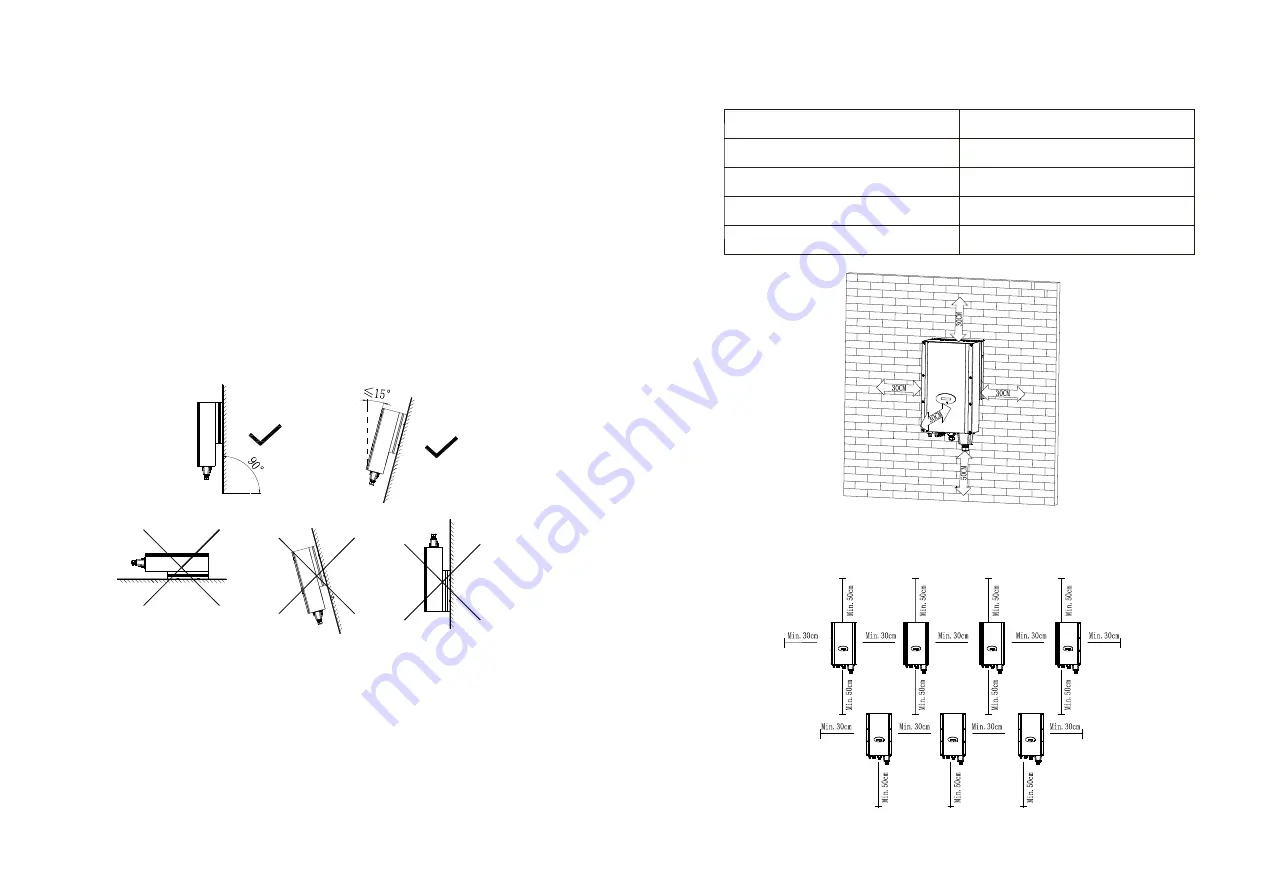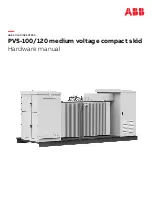
14
13
5.2 Selecting the installation location
Ø
This is guidance for installer to choose a suitable installation location, to avoid
potential damages to device and operators.
Ø
The installation location must be suitable for the inverter's weight and
dimensions for a long period time.
Ø
Select the installation location so that the status display can be easily viewed.
Ø
Do not install the inverter on structures constructed of flammable or thermolabile
materials.
Ø
Never install the inverter in environment of little or no air flow, nor dust
environment. That may derate the efficiency of the cooling fan of the inverter.
Ø
The Ingress Protection rate is IP65 which means the inverter can be installed
outdoors and indoors.
Ø
The humidity of the installation location should be 0~100% without condensation.
Ø
The installation location must be freely and safely to get at all times.
Ø
Vertically installation and make sure the connection of inverter must be
downwards. Never install horizontal and avoids forward and sideways tilt.
Ø
Be sure that the inverter is out of the children's reach.
Ø
Don't put any things on the inverter. Do not cover the inverter.
Ø
Do not install the inverter near television antenna or any other antennas and
antenna cables.
Ø
Inverter requires adequate cooling space. Providing better ventilation for the
inverter to ensure the heat escape adequately. The ambient temperature should
be below 40°C to ensure optimum operation.
Ø
Do not expose the inverter to direct sunlight, as this can cause excessive heating
and thus power reduction.
Ø
Observe the Min. clearances to walls, other inverters, or objects as shown in the
diagram:
Direction
above
below
sides
front
Min. clearance (cm)
30
30
30
50
Ambient dimensions of one inverter
Ambient dimensions of series inverters









































